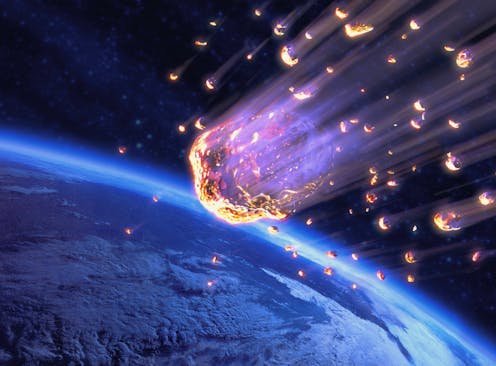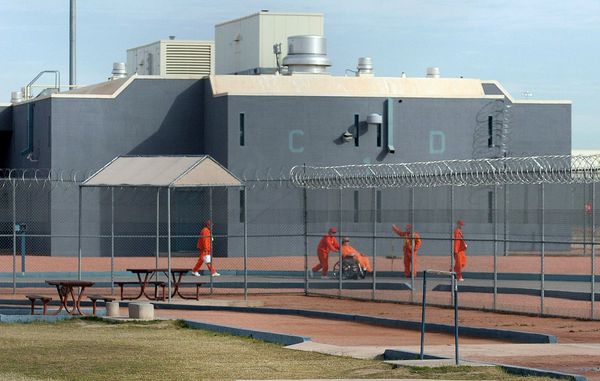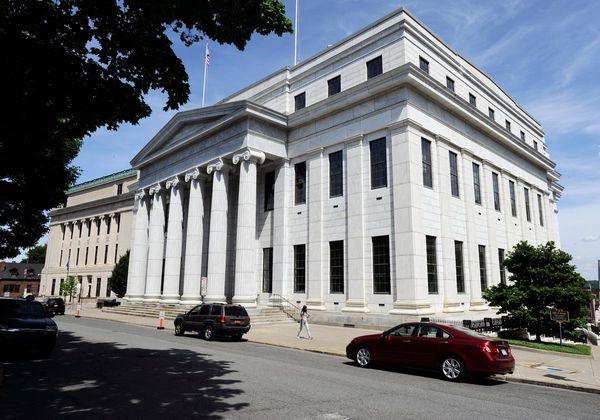
Meteorites – fragments of rock that have fallen to Earth from space in spectacularly fiery meteors – have been the subject of public fascination, awe, myths and even religious worship for thousands of years.
In recent decades they’ve become a cosmic Rosetta Stone for scientists investigating the birth throes of our solar system and the organic life it hosts. Meteorites are therefore rightly classified by many countries as an integral part of communal natural heritage and are sought after by museums and private collectors.
South Africa, where I research meteorites, is one such country. In late 2021, my colleagues and I were alerted to an exceptional opportunity. Gideon Lombaard, a farmer in the Northern Cape province, reached out to us because he suspected that he had found two meteorite fragments. If proved true, these would be the first meteorite discoveries in South Africa in over 40 years.
After subjecting the fragments to a range of tests, we were able to show that the two fragments, despite being found only a kilometre apart, were unrelated – that is, they must have come from different meteor events.
In August, the Meteoritical Society’s nomenclature committee, which adjudicates all new meteorite submissions, formally accepted our proposal that the two fragments were different meteorites. They approved our suggested names – Brierskop and Wolfkop – after landmarks near their discovery sites.
Mr Lombaard’s double discovery raises South Africa’s tally of confirmed meteorites to 51 – the highest in sub-Saharan Africa. Namibia has 18 confirmed meteorites, Botswana 12, Zimbabwe four, and Lesotho and eSwatini one each. But, compared with the over 14,000 meteorites recovered from the Sahara desert, the number of recovered southern African meteorites is extremely small. A concerted national meteorite education awareness and search programme could thus reap great benefits.
What is a meteorite?
A meteorite is a piece of rocky space debris that survives collision with Earth. Meteorites are usually discovered by someone who notices an unusual rock while out walking (called a “find”). However, around 2% of meteorites are classified as “falls” because they are retrieved after witnessed meteor fireball events.
Read more: Secrets revealed of 'dash-cam' meteorite that rocked Russia
The meteorite family comprises several different types of rocks. A very small proportion of the approximately 72,000 meteorites recovered globally to date are actually pieces blasted off the surfaces of the moon and Mars by giant impacts. The overwhelming majority appear to have originated in the asteroid belt that lies between the orbits of Mars and Jupiter. They are the shrapnel from past collisions between some of these asteroids that were ejected into orbits that have ended up crossing Earth’s path.
Discovery and forensics
Finding meteorites is not easy, which makes Mr Lombaard’s twin discoveries all the more significant. Because they originate in outer space, meteorites commonly contain iron in either metal or sulphide forms, both of which begin to deteriorate rapidly when they come into contact with free oxygen and water.
It is thus not surprising that nearly 80% of all meteorites have been found where arid climates aid their preservation, namely Antarctica and the Sahara desert. Meteorites typically become coated in a dark fusion crust during their fiery passage through the atmosphere. That makes the white Antarctic ice and the pale-coloured Sahara bedrock and sand perfect backdrops for searchers.
Mr Lombaard discovered the two meteorites during routine farming activities. The Brierskop meteorite is a 21.19g chondrite which he found on 18 September 2018. Chondrites are the oldest rocks in our solar system, dating back 4.567 billion years. It was only after he found the Wolfkop stone (also a chondrite, weighing 90.26g) 1km away from the Brierskop site on 27 August 2021 that he reached out to determine whether these were, as he suspected, meteorites. Contacting an expert is the best approach if you think you’ve found a meteorite.
The initial pictures he sent were very promising; our primary task was then to establish whether they represented two pieces from a single fall or had originated from separate falls.
Our analysis, which involved slicing a small piece from each stone and grinding it down to produce an ultra-thin wafer through which light from a microscope could pass, was able to show that the meteorites have distinct differences.
Brierskop contains less iron metal and less iron in its main silicate minerals than Wolfkop. The chondrules (particles in the rock) are much better preserved in Brierskop, indicating that they experienced less heating in the parent asteroid before the impact collision that liberated it. We then used the greater oxidation (rust) of the Wolfkop stone to suggest that its fall predated that of the Brierskop meteorite.
South Africa’s meteorite heritage
The South African Heritage Act No. 25 of 1999 classifies South African meteorites as national heritage items that cannot be damaged, removed, exported or traded without a permit issued by the South African Heritage Agency. The Meteoritical Society also requires that meteorites are properly stored and conserved at accredited institutions such as museums and universities for future research. Wolfkop and Brierskop are now stored at the University of the Witwatersrand in Johannesburg, which is an accredited repository.
An average of between 10 and 50 meteorites are estimated to hit Earth’s surface every day. Technology will help drive new discoveries. In recent years an increasing number of countries have installed camera networks (such as NASA’s CAMS) designed to record the trajectories of meteor fireballs that can then be triangulated to try to locate the fall site. The power of citizen science is also being harnessed in many places in the form of volunteer ground searches for fallen meteorites.
Prior to the two recent discoveries, the Meteoritical Bulletin Database listed 49 meteorites as having been satisfactorily proved to be from South African sites. Mr Lombaard’s double find takes the country’s meteorite inventory above 50. There’s no doubt that more are just waiting to be found.
Roger Lawrence Gibson receives funding from the NRF.
This article was originally published on The Conversation. Read the original article.







